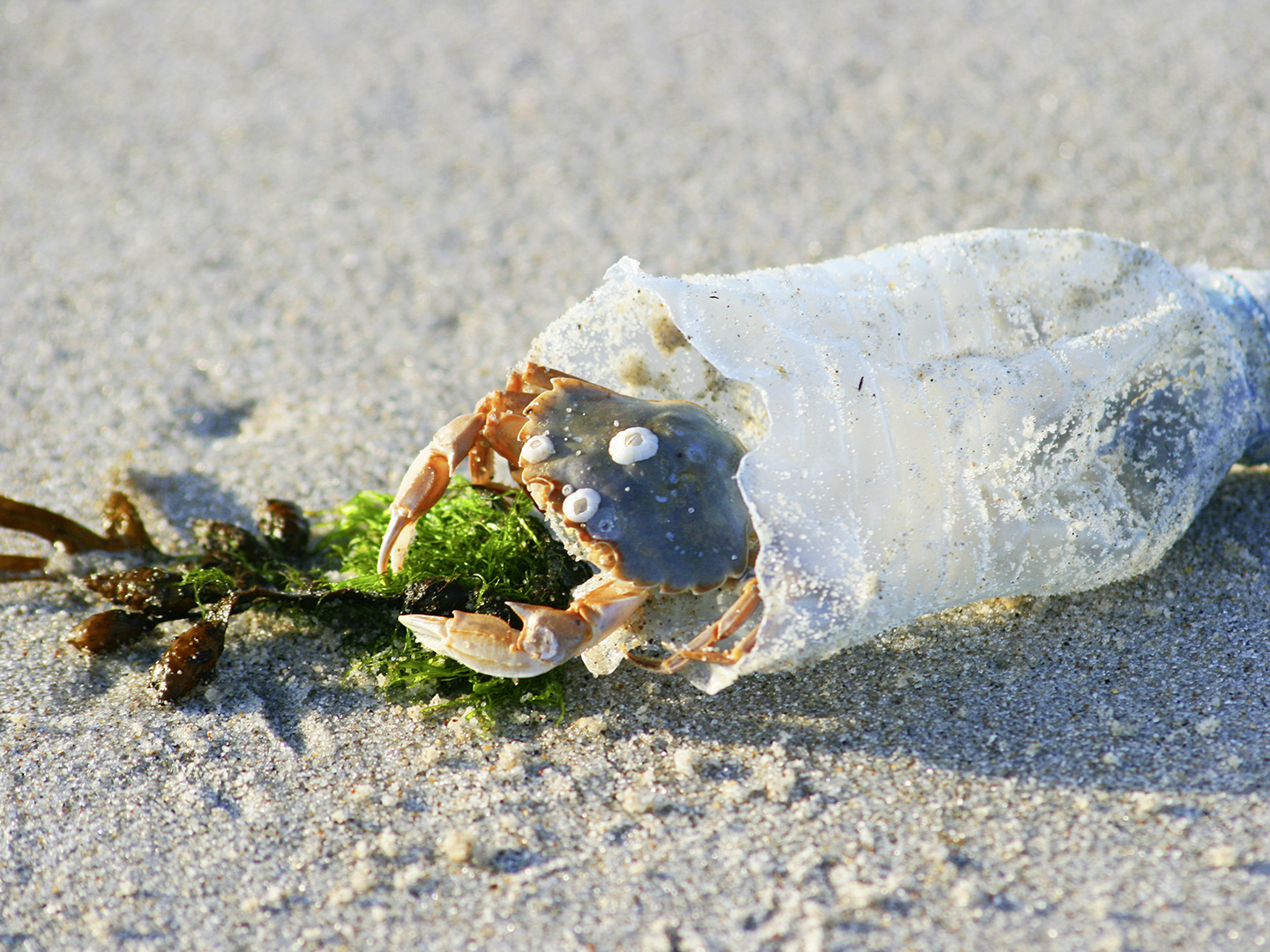Microplastics in the ocean: Full extent still not foreseeable
At today’s conclusion of the 5th UNEA Conference in Nairobi, which adopted a resolution to start negotiations for an international legally binding instrument to end plastic pollution, the Roundtable on Marine Litter (RTM) is calling for a swift reduction of inputs of microplastics to the North Sea/Baltic Sea. In a new issues paper published under the coordination of Fraunhofer UMSICHT, the Roundtable illustrates many possibilities of reducing microplastics input to the marine environment. These include reducing tyre abrasion, developing/prewashing textiles with lower release, introducing more stringent requirements of insulation materials on construction sites. Marine plastic pollution is one of the most urgent problems facing the North and Baltic Seas. It has been traced in all areas of Germany’s seas and may be reprotoxic and impair the vitality of marine organisms and of those at the bottom of the marine food chain in particular. The reports says the full extent of the plastic pollution and its impact cannot be determined due to inadequate research and analytical methods.
Microplastics pollution in the environment is a complex problem. Microplastics can enter the environment or be produced during use by abrasion. The sources of the former include infills from artificial turf or pellet losses, while the latter includes abrasion from tyres and road markings, the weathering of colours and coatings, releases from insulation materials and fibre from textiles. It is therefore unfeasible to reduce plastics emissions by means of individual measures and instead requires a broad-based package of measures.
The RTM paper is based on the results of a three-part workshop series which was organized jointly by the German Environment and Fraunhofer UMSICHT together with the RTM's sub-working group “Microplastics”. It reports that science still relies on estimates of the amounts of emissions and their sources. The RTM is calling for more empirical studies to generate reliable data.
Stefanie Werner, marine protection expert at the German Environment Agency and director of the RTM, said: “The plastics industry in particular must be brought on board to combat the microplastics problem. It must ensure that the necessary in-depth investigations regarding microplastics inputs to the oceans are carried out, in accordance with the precautionary and polluter pays principles and to contribute to solving the pollution problem for which it bears great responsibility.”
Jürgen Bertling of Fraunhofer UMSICHT, corresponding author of the paper, said: “Individual measures will unlikely be enough to reduce plastic emissions. Instead we need a range of inter- and transdisciplinary approaches. As in the case of the knowledge gained on climate change over the past decades, understanding of the effects associated with plastic emissions is emerging only slowly. In both cases, however, the sheer volume of emissions is an argument in favour of precautionary environmental protection.”
The RTM report proposes 28 concrete measures for these purposes. The most relevant for protection of the marine environment are:
- Reducing the release of microplastics from tyre abrasion through adaptation of traffic concepts and new tyre materials;
- Developing lower-emission textiles and better processing technologies as well as pre-washing of textiles;
- Reducing the inputs of ultralight (mobile) polystyrene foams from the construction sector through stricter requirements on the use and applications of insulation materials and through use of temporary precipitation filters around construction sites;
- Improving rainwater treatment as main input path for unintentionally released microplastics, e.g. through use of retention soil filters;
- Reducing the open use of plastics in the marine/coastal environment (e.g. geotextiles, corrosion protection of offshore installations);
- Equipping the existing voluntary concept of the plastics industry “Operation Clean Sweep“ with an externally validated certification for pellets of plastic materials from industrial applications (granulates, flakes, grit or powder);
- Regulating intentionally added microplastics and developing and implementing norms and standards to determine the biodegradability of certain products and materials under diverse marine conditions.
Further information
The Roundtable on Marine Litter is under the auspices of the Federal Ministry for the Environment, Nature Conservation, Nuclear Safety and Consumer Protection, the Lower Saxony Ministry for the Environment, Energy, Construction and Climate Protection and the German Environment Agency.
Last modified:
 Fraunhofer Institute for Environmental, Safety and Energy Technology UMSICHT
Fraunhofer Institute for Environmental, Safety and Energy Technology UMSICHT